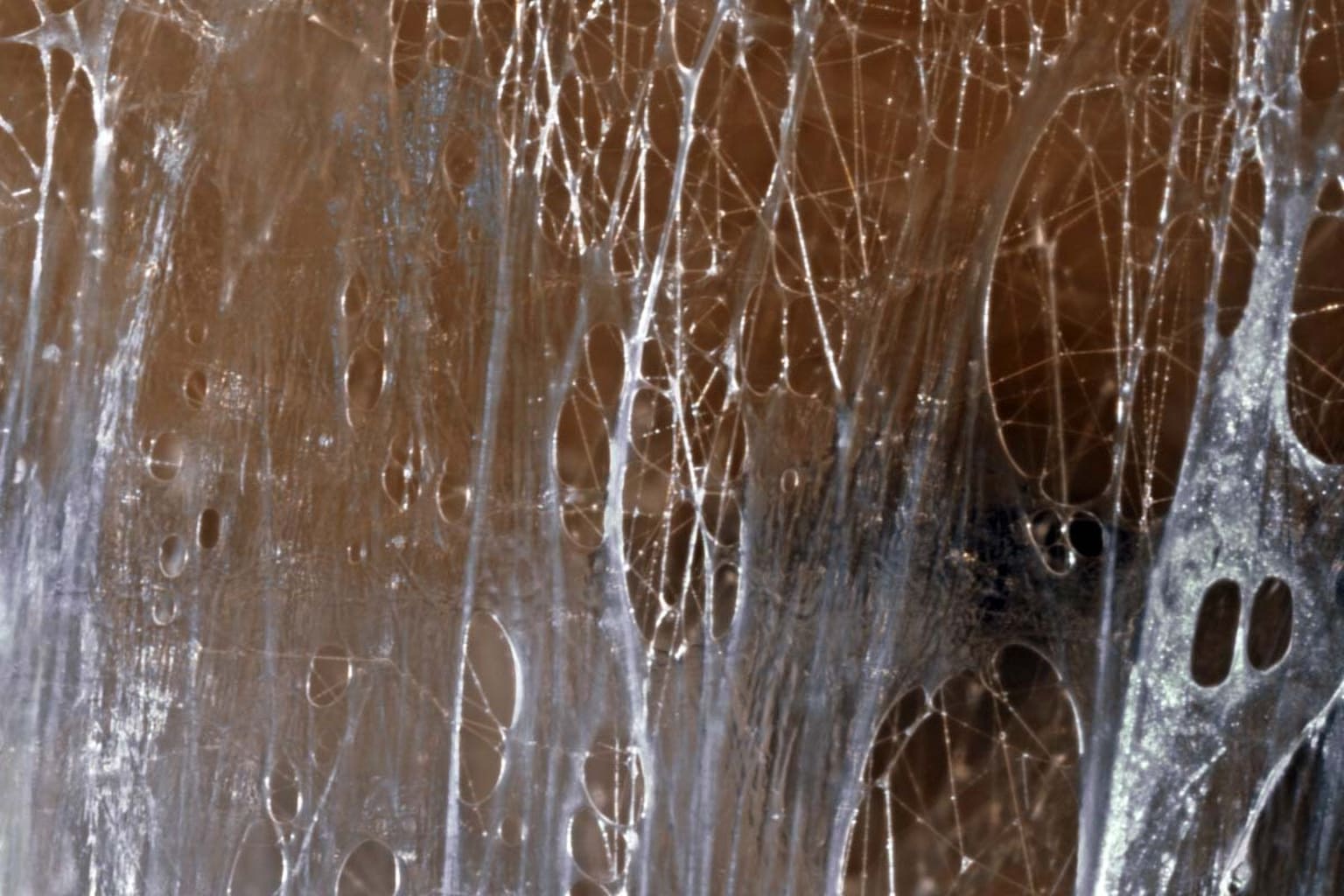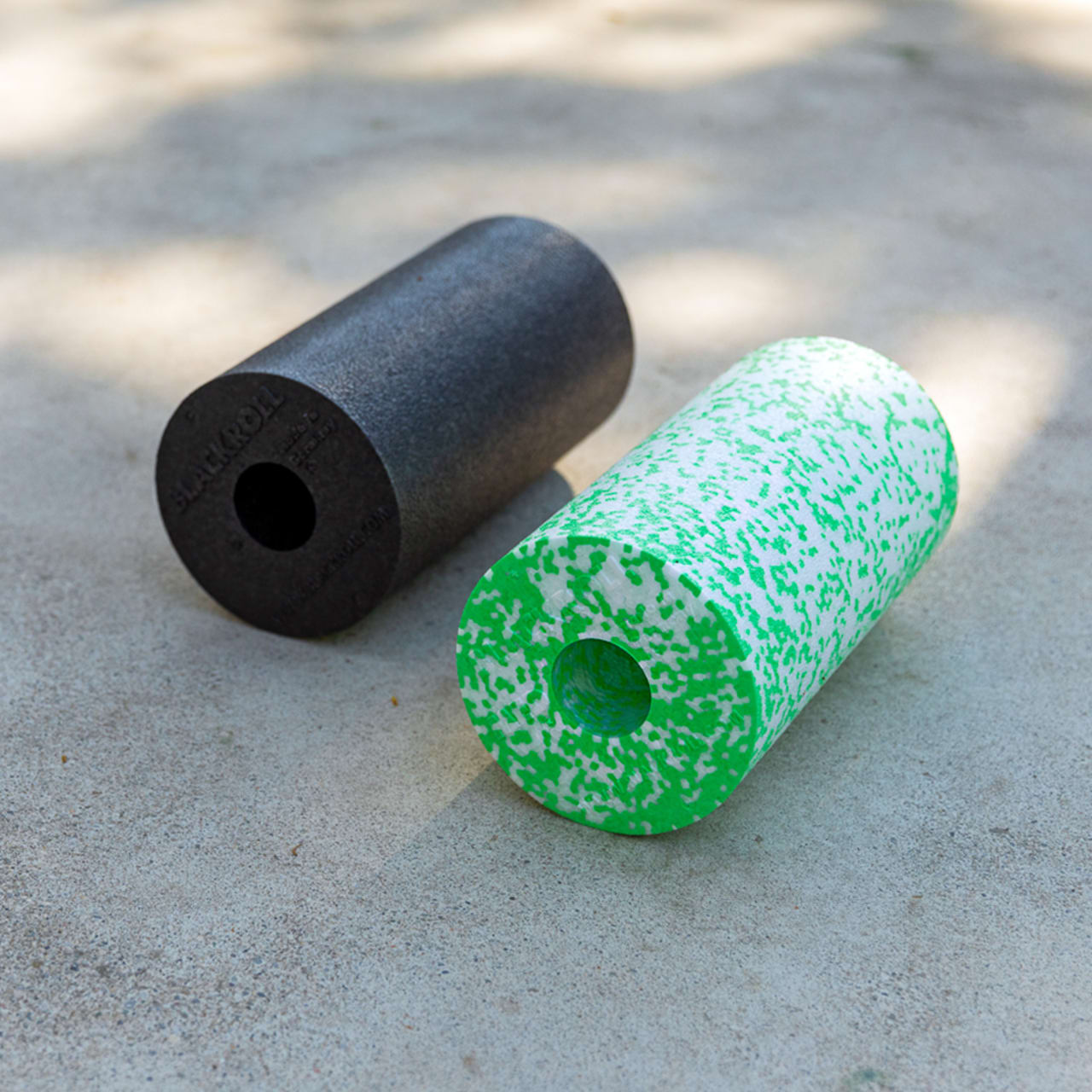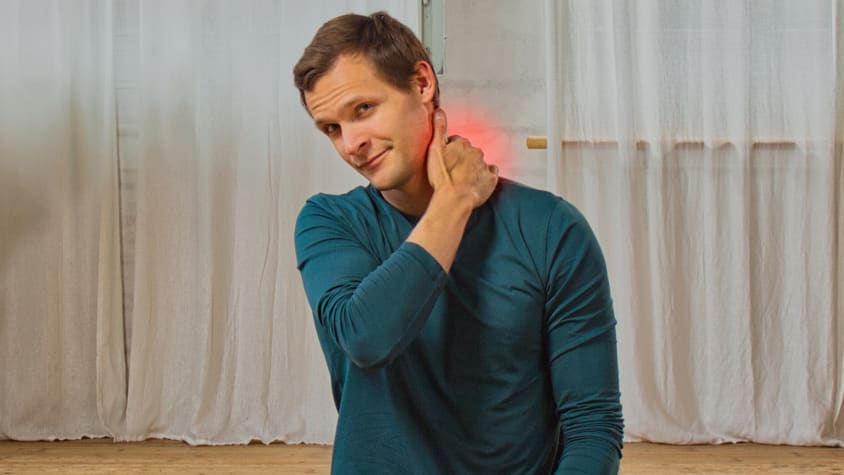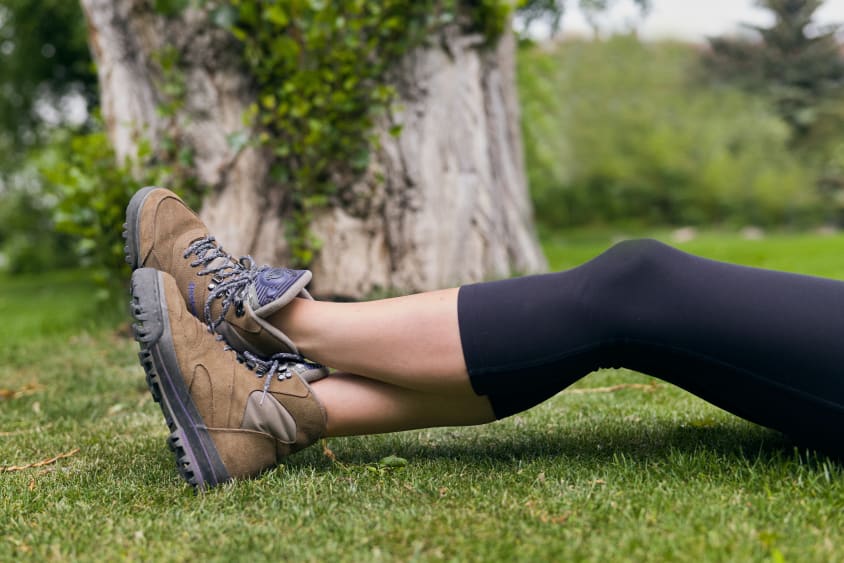
Why the fasciae can be the cause of pain

Are you often tense? You are not alone. Very few people are 100 percent pain-free. However, very few are aware that the cause of their pain can lie in the fasciae, and that they themselves can do something about it. However, it is precisely this thin membrane, which surrounds and holds together each of your organs, every blood vessel, every bone, every nerve and muscle fibre that is in most cases the cause of your physical pain, muscle tension or even chronic pain.
Just ten years ago, very few people even knew what a fascia was. Fasciae contain more pain receptors than muscles, are closely linked to your autonomic nervous system and forward continuous signals to the brain. For this reason, it is now referred to in scientific circles as the largest sensory organ in the human body.
The reason why the root of your pain may lie in the fasciae, how to know that you are dealing with fascial pain, and how you can get a handle on your pain yourself, without any drugs, injections etc. – find out all this here.

How pain develops in the area of the fasciae
Fascial pain occurs primarily in the area of the myofasciae (muscle fasciae). The word myofascia consists of the terms "Myo" - muscles and "Fascia" - connective tissue. If pain develops in this area, we talk of myofascial pain syndrome.
However, the fasciae, which surround the organs, can also cause pain. For example, the intestine can trigger pain in the back area or even in the shoulder, via its fascial attachments.
The very same also applies to the muscular fasciae. For the location from which the pain spreads is not always the location from which the problem originates. Here we speak of pain transmission. A hardening in the area of the sole of the foot can extend right up into the head via the rear fascial pathway . This results in headaches.
The tensions in your body are thus ,mutually dependent and influence one another. You can picture this like a sailing ship. The tension in the individual ropes, which are attached at the various points, must be attuned to one another. If just one rope is released, the ship may sail in a different direction. The same principle can be applied to your own body. Your bones and spine are held in the correct position by the myofascial tension balance. Experts refer to this new perspective as "Tensegrity"
Adhesions and hardenings in the area of the fasciae can thus causeimbalances throughout the entire body. This causes fascial pain as a result of adhered fasciae.
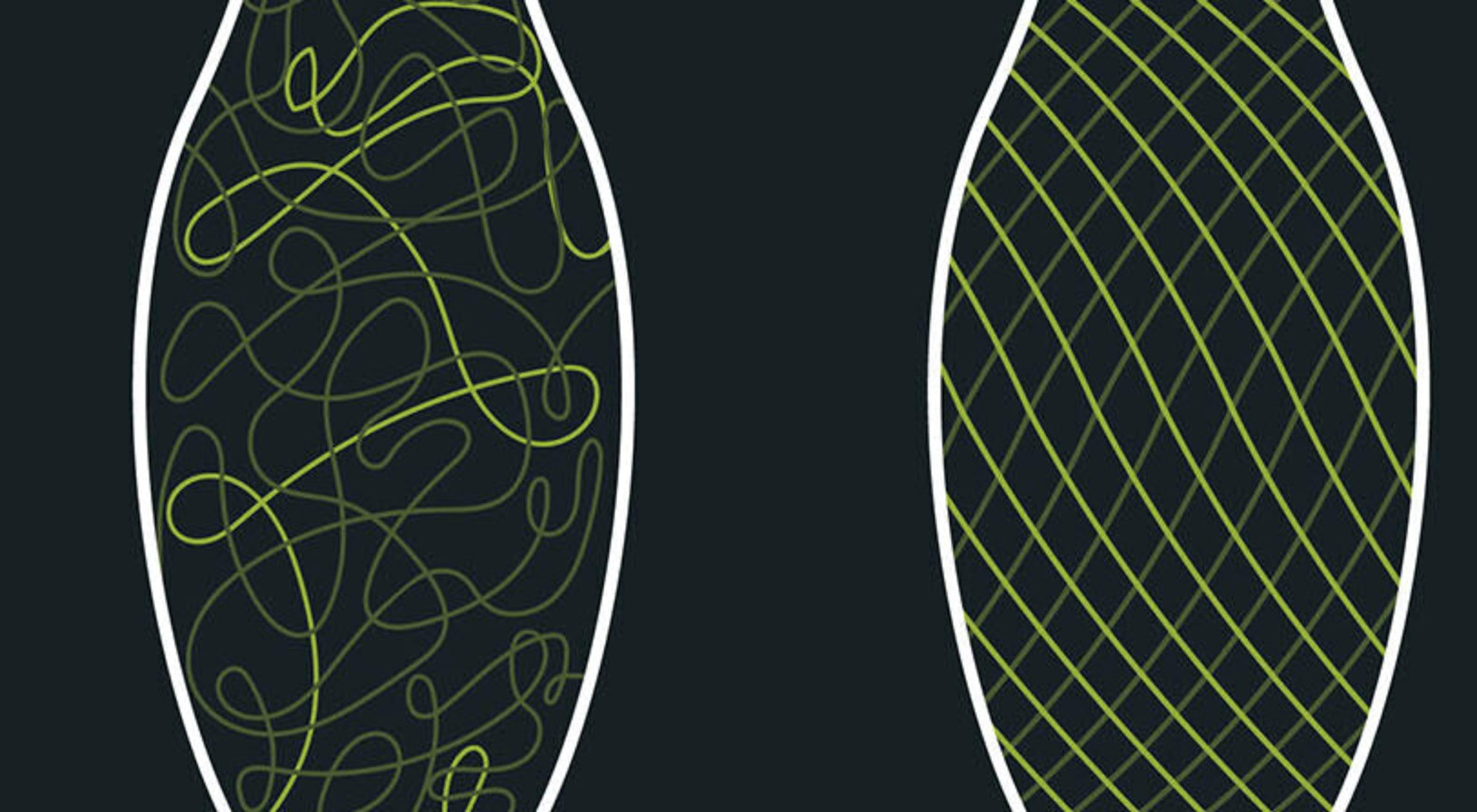
How to imagine what adhered fasciae are like
Fasciae differ depending on their location, and consist of multiple layers. There is a liquid that circulates between each layer for good lubrication – similar to the oil in an engine. What do you now picture when you hear the term adhered fasciae? Presumably the solidification of the liquid that holds the individual layers together like a glue, thus limiting lubrication. In the simplest of terms, this idea is not incorrect. However, experts explain the reduced lubrication of the fasciae in somewhat more complex terms, as our knowledge and understanding of the fasciae is increasingly expanding on account of fascia research in recent years.
Healthy fasciae are flexible and can slide over one another. The fasciae become matted and hardened areas form. Pain can then develop, especially when the fasciae become so thick that these nerves constrict.
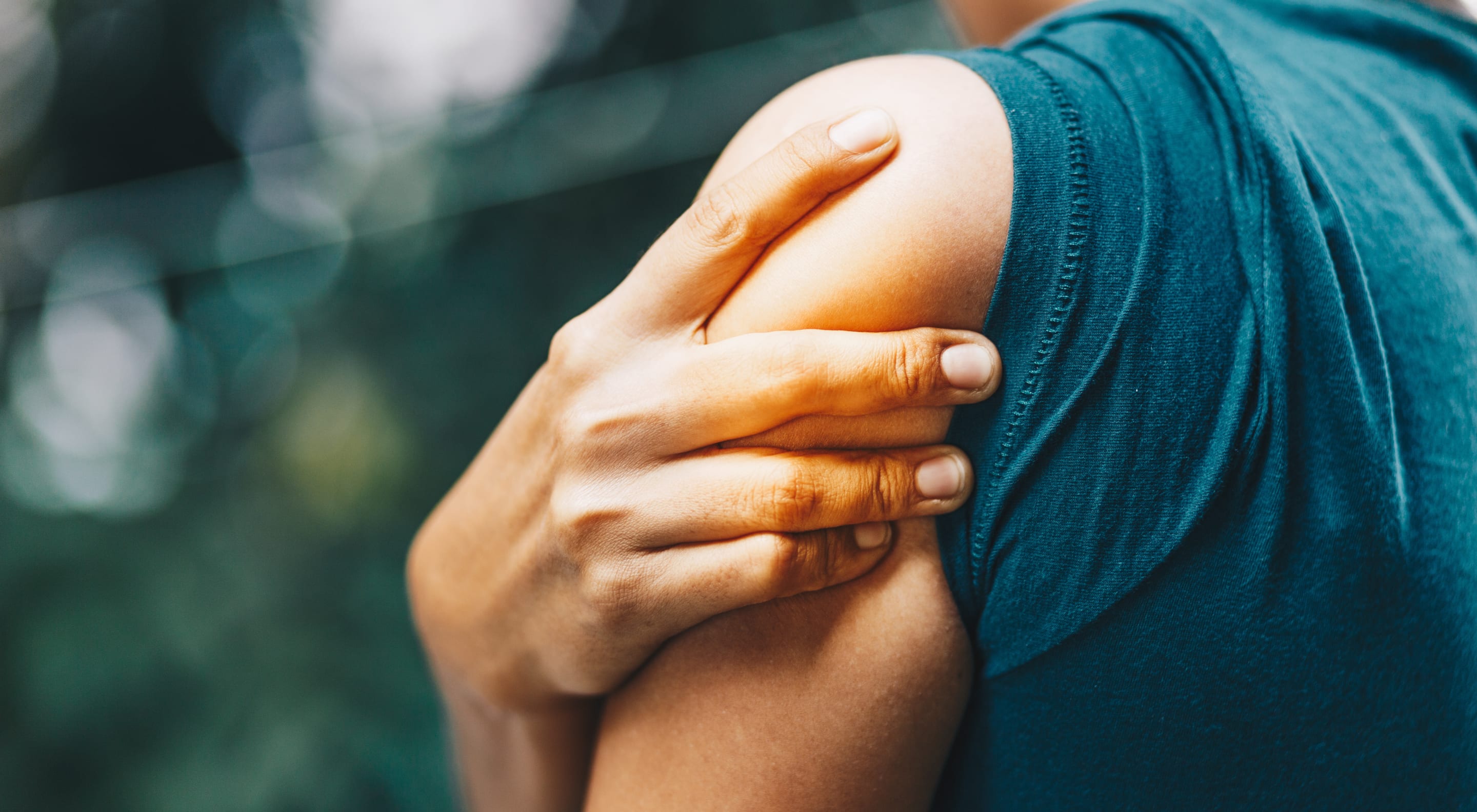
What sort of pain is fascial pain
Myofascial pain can be acute, but is generally chronic. It is the most common cause of sustained pain in one or more regions of the body, and accounts for 30-85% of all muscular and skeletal pain.It is estimated that myofascial pain is responsible for 85% of back pain and 55% of head and neck pain.Shoulder pain can often also be traced back to myofascial dysfunction.In most cases, if no action is taken, the pain spreads over time to other parts of the body via the myofascial pathways.
Myofascial pain occurs at any age, but most frequently affects the age group from 27 to 50. This is probably for the following reasons:
- On the one hand, this age group has a sufficient number of years behind it, during which causes such as bad posture, unilateral strain or stress have already been able to take effect within the myofascial system.
- On the other hand, these people are usually still very active, as a result of which the myofascial pain and loss of movement can have a severely limiting effect.
It often occurs in otherwise healthy people. However, it is much more frequently found in conjunction with other musculoskeletal, neurological, or psychological complaints, such as non-specific back and neck pain, or even cancer.
Due to its continuing persistence, it often results in a decrease in quality of life, with an impairment of one's physical, psychological, social, and emotional well-being.An accurate diagnosis of myofascial pain is difficult. There are currently no standardised criteria in this regard. In addition, the symptoms frequently overlap with other chronic pain conditions, such as fibromyalgia, irritated nerve roots, or pain originating from the ligaments, tendons, or joints.Nonetheless, in cases of myofascial pain, a doctor or physiotherapist can manipulate sensitive points in the muscle and/or fascia, which can trigger intense pain, which in some cases can radiate along the corresponding myofascial chain, following a specific route . Sometimes this is also accompanied by muscle weakness or sensitivity disorders and frequently by restricted mobility.
Typical of fascial pain:
- Pain and sensitivity disorders spread along the fascial pathways
- The pain, and in some cases a burning sensation, spread extensively
- Relaxed movement tends to reduce the pain
- Movements feel stiff and cause pain, particularly at the end of the range of movement

Why fasciae adhere resulting in fascial pain
- Excessive strain:
If your body continually acidotic as a result of exertion, this has a negative effect on your fasciae. What is important is that you find a balance between stress and recovery.
- Unilaterial, repetitive movements, inactivity:
The unilateral strain of the muscles results in tissue stress in the myofascial system. This can result in poor posture. People who are particularly badly affected include runners, cyclists, and office workers.
- Circulatory and lymphatic flow disorders:
Your fasciae must be supplied with oxygen and nutrients. Likewise, it must be possible to effectively purge used tissue water, along with its metabolic waste products, via the veins and the lymph. Too few nutrients and fluid on the one hand, and too many accumulated toxins on the other, cause the fasciae to adhere, and make them brittle.
- Diet & liquids:
A balanced diet is a basic building block with which to ensure that your fasciae are supplied with the correct nutrients. Alongside a sufficient supply of fluids (fasciae consist of approx. 75% water), the acid-base balance in particular is crucial.
- Stress:
The fasciae react to stress stimuli by tensing up. If the stress – and with it the tension – become chronic, then tensions develop in the body.
- Psychological trauma:
Fasciae have an emotional memory. Misfortunes can therefore literally impact your body.
- Diseases:
structural disorders such as arthritis or scoliosis, systemic conditions such as hypothyroidism, organ disorders such as intestinal diseases, cancer (the disease itself, and/or its treatment), as well as depression, anxiety and other psychological disorders. The prolonged consumption of painkillers can also have a negative impact on the fasciae.
- Sleep problems:
good sleep with a sufficient quantity of deep sleep phases ensures the distribution of the growth hormone HGH (Human Growth Hormone). HGH is responsible for keeping our fasciae elastic and supple. It stimulates the blood flow and ensures that the muscles and fasciae can relax. If we do not get enough high-quality sleep, the fascial tissue can become severely matted.

What helps alleviate fascial pain
In studies, various therapies have shown positive effects in the treatment of myofascial pain.From a physiotherapy perspective, massages, special manual therapeutic techniques in the area of "myofascial release", hot and cold procedures, as well as ultrasound, taping, electricity and acupuncture can be used.However, the most effective approach involves lifestyle changes, as well as special exercise programmes.The most common outcome here is a reduction in pain, or an increase in mobility and strength in the affected regions of the body.
Training with foam rolling tools such as foam rollers improves moisture penetration, and with this, the lubrication of the fasciae. Muscle pain, muscle tension and fascial adhesions are relieved.However, fascia training, whereby the muscles are contracted and relaxed in alternation, or stretch positions held for a sustained period of time, as in Yin-Yoga, can provide relief.
Together, these exercises are referred to as "self-myofasical release" (SMR or SMT exercises).These are exercises that are based on techniques developed by therapist, but that can be performed by the affected persons independently.
What exercises such as myofascial self-massage do
The physiological effects include:
- Improved fluid exchange
- The relief of adhesions
- Improved circulation
- The stimulation of the lymphatic flow
- The relief and regulation of the nervous system
These influences have noticeable effects on your body, for instance:
- Your mobility improves
- Your tensions are relieved
- Your feeling of stress is reduced
- Your regeneration accelerates
- Your performance capacity is increased
- Your susceptibility to injury is reduced
- Your body awareness improves
06 Conclusion
If you have muscle pain or muscle tension due to adheredr fasciae, then ensure that you get sufficient and varied exercise, a balanced diet and regeneration as part of your daily routine, and implement a specific exercise programme, such as fascia training. The health of your fasciae is the key to alleviating your pain.

